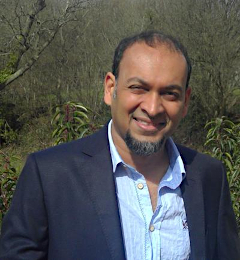Southampton scientists make breakthrough in search for future drugs for age-related blindness

University of Southampton researchers have developed an innovative solution to treating sight loss in old age.
Led by Professors Andrew Lotery, Jessica Teeling and Dr Arjuna Ratnayaka, the study has been able to replicate important features of dry age-related macular degeneration (AMD) in mice. These mice quickly develop damage in their retinas similar to retinal lesions in dry AMD patients, which could have a huge impact in understanding this complex disease and help develop meaningful treatments.
AMD is a common blinding disease where central vision is irreversibly lost and affects one in three people in their 80’s. Patients find it difficult to recognise faces, read or drive, with over 600,000 people in the UK are affected and this will keep increasing with an ageing population.
There had previously been few models to study the dry form of AMD, which in part has held back the development of treatment for patients with this type of the disease.
Dr Ratnayaka, lecturer in Vision Sciences at the University, said: “This is the result of multi-disciplinary work by a team of scientists and clinicians over a seven-year period.
“These mice could help us understand how AMD causes damage to the retina, which is desperately needed. This is important, as it appears that prolonged injections of Vascular Endothelial Growth Factor (VEGF) inhibitors, which is used to manage wet AMD in patients, can sometimes result in a switch to the dry form.
“The Southampton AMD mouse model has therefore come at a critical time, as it could be used to develop effective future therapies against dry AMD. As a leading clinical trials centre in this area we are well-placed to translate promising new discoveries to benefiting dry AMD patients.”
Wet (choroidal neovascular) AMD can be managed in most patients by monthly eye injections. However the dry form, which is also known as geographic atrophy, accounts for approximately half of late-stage AMD patients and does not have any effective treatment.
Scientists and clinicians use mouse models to study how AMD develops in the eye, and to test new therapies before undertaking clinical trials in patients. One reason why dry AMD patients do not have any effective treatment is the absence of a good mouse model to test potential new treatments. The study, published in Scientific Reports, highlights that this new mouse model could therefore be a potential game changer in helping to treat patients in the future.
